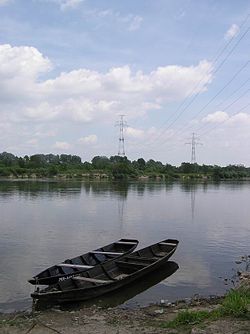This article needs additional citations for verification .(June 2013) |

In Poland, there are 6 powerline crossings of the Vistula river and one powerline crossing of the Odra river using pylons taller than 100 metres.[ citation needed ]
Contents
- Ostrówek-Tursko Vistula Powerline Crossing
- Lubanie-Bobrowniki Vistula Powerline Crossing
- Regów-Gołąb Vistula Powerline Crossing
- Świerże Górne-Rybaków Vistula Powerline Crossing
- Nowodwory-Łomianki Vistula Powerline Crossing
- Nowy Bógpomóż-Probostwo Dolne Vistula Powerline Crossing
- Skolwin-Świnoujście Odra Powerline Crossing
- See also
- References